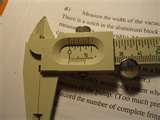Elasticity
The ability of material to resume its original shape once the force acting on it is removed.
Hooke’s Law
State that applied force is directly proportional to the extension, x of spring if its elastic limit is not exceeded.
F α x
F = k x
(k = force constant) with units N m-1
Factors That Affect the Elasticity of a material
1. Value of force constant, k
More stiffer, more higher k.
2. Length of spring
The longer the spring, the more elastic will the spring be.
3. Diameter of spring
The larger the diameter of the spring coil, the more elastic will the spring be.
4. Diameter of spring wire
The greater the diameter of the spring wire, the less elastic will the spring be.
5. Material of spring
Different materials of springs will yield different elasticity. For example, a steel(keluli) spring is less elastic than a copper(kuprum) spring.
